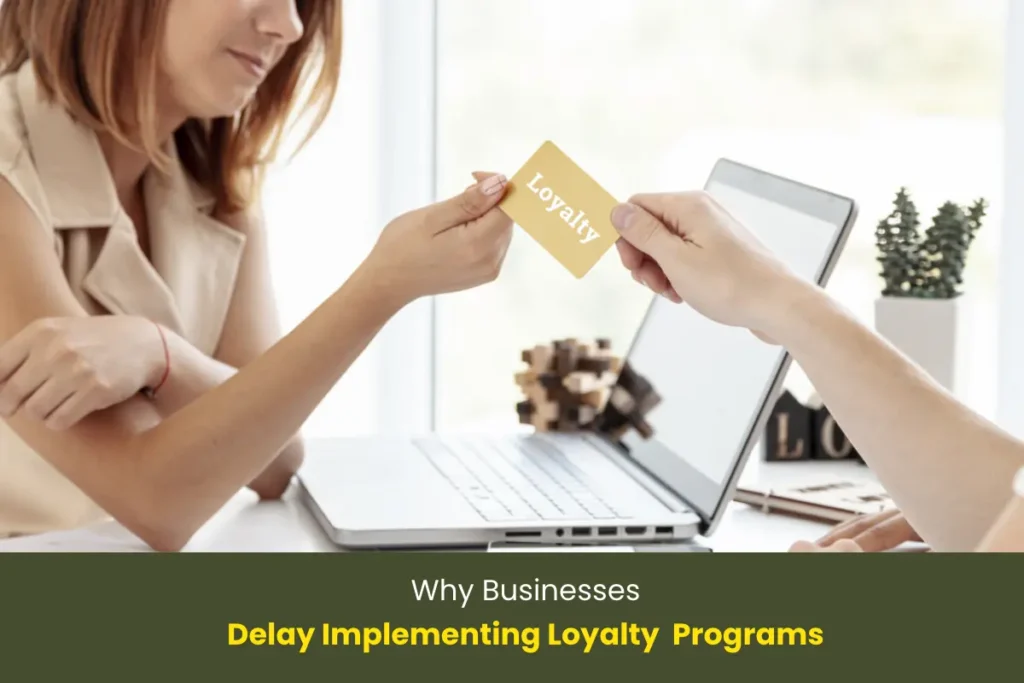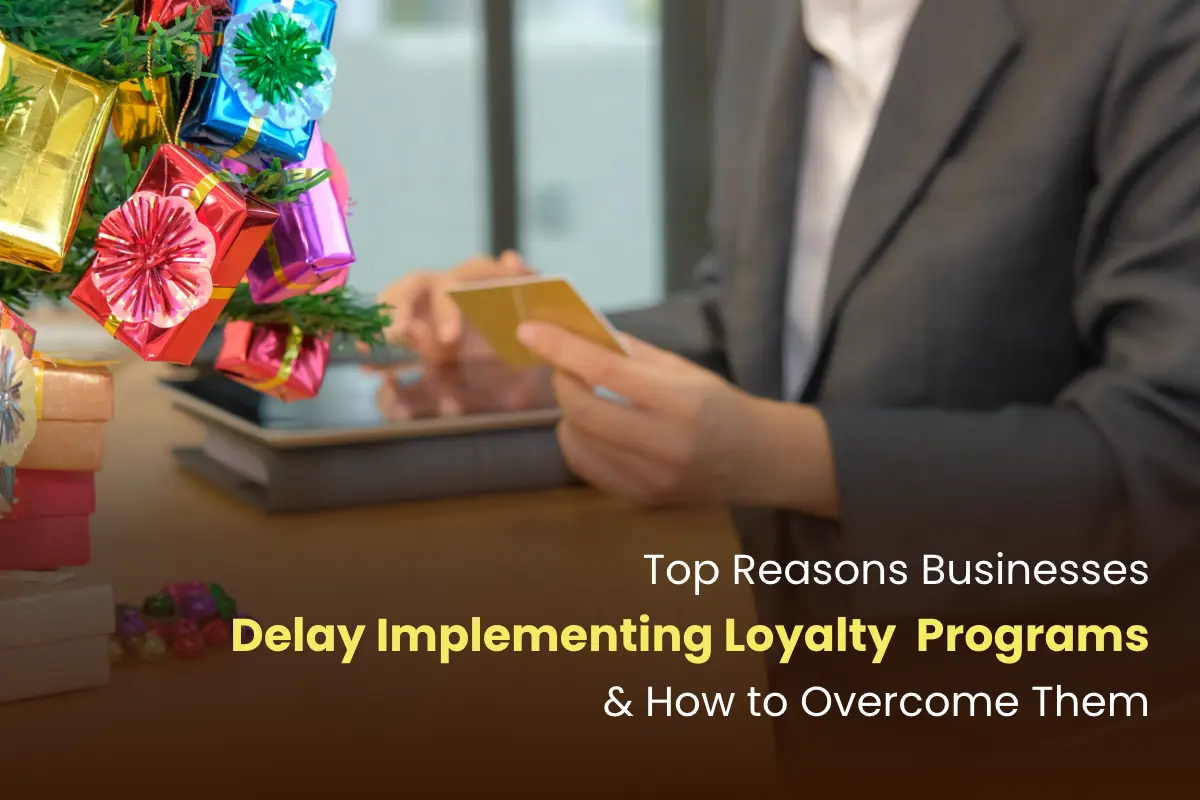Loyalty programs have become essential for businesses looking to foster customer retention and drive sustained growth. These programs are designed to reward repeat customers, encouraging them to continue their relationship with a brand. Despite their clear benefits, many businesses hesitate to implement a loyalty program. A 2023 study, found that 81% of customers are more likely to continue doing business with brands that offer loyalty programs. Yet, according to Forrester, nearly 40% of businesses still don’t have a loyalty program in place, citing various challenges as the main reason.
Many businesses, particularly smaller ones, fear that the initial investment or ongoing management will stretch their resources too thin. Some simply lack the time to design, launch, and manage an effective loyalty initiative while keeping up with day-to-day operations. However, these concerns are not insurmountable and, in most cases, can be addressed with careful planning and the right tools.
In this blog, we’ll explore the common reasons businesses delay implementing loyalty programs and offer practical solutions to overcome these challenges.
The Growing Need for Loyalty Programs in Today’s Market

Customer loyalty is a feeble thing. It can take a lot of time to build, but only seconds to lose. This is because customers are always evolving—their behavior, needs, and demands will keep evolving as they stay with a business. Customers are no longer just looking for quality products; they also expect meaningful experiences and personalized interactions.
And if the brand fails to deliver what the customer wants, they might end up losing their loyal customers. A survey revealed that 75% of customers prefer brands that offer rewards or recognition for their loyalty, with 56% stating they would switch to a competitor for better loyalty benefits.
In this environment, loyalty programs have evolved from being a “nice-to-have” to a strategic necessity for businesses of all sizes. They not only encourage repeat purchases but also provide valuable insights into customer behavior, allowing brands to tailor their offerings. As businesses face shrinking margins and higher customer acquisition costs, a well-executed loyalty program can be a critical tool for boosting customer lifetime value and enhancing brand advocacy.
Why Businesses Delay Implementing Loyalty Programs
Transitioning into loyalty programs may seem daunting, but understanding the root causes of hesitation can demystify the process and reveal opportunities for strategic improvement.

1. Perceived High Costs
For many businesses, the initial investment in a loyalty program appears relatively inexpensive. The fear of high upfront costs often leads to a delay in program development, as companies worry about the financial strain it could impose.
Solution: Conduct ROI and Financial Modeling
To address financial concerns surrounding loyalty program investments, businesses should first focus on the long-term return on investment (ROI). Loyalty platforms like Zinrelo offer loyalty program financial modeling services. Financial modeling can help predict the increase in customer lifetime value, repeat purchases, and profitability that a loyalty program delivers. By using these insights, companies can better understand the sustainable financial impact and plan accordingly. Once the ROI is clear, cost-effective strategies like tiered rewards or digital loyalty programs can be explored to reduce overhead.
Plan Your Loyalty Program Budget with Confidence
Download our comprehensive guide on creating a loyalty program budget. Learn how to forecast costs, maximize ROI, and build a financially sustainable program.

2. Complexity of Implementation
The perceived complexity of designing and managing a loyalty program can be overwhelming, especially for businesses without prior experience. The process of choosing the right rewards, setting up a system to track points, integrating the program with existing technology, and ensuring ongoing customer engagement can seem daunting. This often leads to hesitation or inaction, as businesses may feel they lack the expertise to execute the program effectively.
Solution: Define Clear, Measurable Objectives and Use Simplified Platforms
Simplifying the implementation process is crucial. Businesses should begin by defining clear, measurable objectives for their loyalty program, such as increasing customer lifetime value or boosting repeat purchases. From there, they can seek out platforms that reduce complexity. Zinrelo is one such loyalty platform that offers program design services to guide businesses through every step of creating a loyalty program.
Top loyalty platforms offer customizable features and automation, allowing businesses to focus on the strategic aspects of their program while handling the operational details. This makes implementation far more manageable, enabling companies to launch successful loyalty programs even with limited internal resources.
3. Lack of Time
One of the most common reasons businesses delay implementing loyalty programs is the belief that they don’t have the time to design and manage them. With day-to-day operations consuming most of their bandwidth, the idea of dedicating additional time to setting up and maintaining a loyalty program often seems impossible.
Solution: Integrate Loyalty Management into Existing Workflows and Automate Tasks
To address time constraints, businesses should look for solutions that integrate loyalty program management into their existing workflows and automate time-consuming tasks.
For example, Zinrelo’s loyalty program operations & management services are specifically designed to minimize the need for manual intervention. By automating critical processes such as customer segmentation, point tracking, and rewards management, businesses can significantly reduce the time spent on administrative tasks. This allows loyalty programs to run efficiently in the background, while the company can continue focusing on its core operations.
4. Uncertainty About Financial Projections
Another major reason for hesitation is the uncertainty around the financial impact of launching a loyalty program. Businesses worry that the return on investment (ROI) may not justify the costs, especially if they aren’t sure how to accurately predict the financial benefits.
Solution: Use Predictive Analytics and Financial Modeling
Accurate financial forecasting is essential for overcoming this uncertainty. In financial planning for loyalty programs, businesses should start by establishing clear Key Performance Indicators (KPIs) and employ predictive analytics to forecast the potential Return on Investment (ROI) of their loyalty program.. Tools that track customer behavior and spending patterns can provide valuable data for making informed decisions. Brands can also forecast the financial impact of loyalty programs through financial modeling services offered by loyalty platforms like Zinrelo.
5. Lack of Understanding of Loyalty Program Benefits
Many businesses do not fully grasp how loyalty programs can drive customer engagement and revenue growth. This lack of understanding can lead to hesitation and missed opportunities.
Solution: Educate with Case Studies and Strategic Consulting
Businesses should seek to understand the full spectrum of benefits that loyalty programs offer, from increased customer retention to enhanced brand loyalty and higher average transaction values. Case studies and success stories from similar industries can be particularly persuasive, illustrating how loyalty programs have driven tangible results for other companies. Businesses can also seek strategic consultation from loyalty experts to identify the specific benefits they can expect from a loyalty program, making it easier to justify the investment and take the next step.
6. Overlooking Integration with Existing Systems
Integrating a loyalty program with existing CRM or marketing systems can present technical challenges. These challenges, if not addressed, can cause significant delays in implementation.
Solution: Prioritize Platforms with API Integrations and Seek Provider Support
To ensure seamless integration, businesses should choose loyalty program solutions that are designed to work with their current systems. Many platforms like Zinrelo, offer APIs or built-in integrations that make it easier to connect loyalty programs with existing technology stacks. Additionally, seeking support from the solution provider can help address any technical difficulties and ensure a smooth setup. By prioritizing integration from the outset, businesses can avoid delays and ensure their loyalty program is fully operational as quickly as possible.
Conclusion
Implementing a loyalty program is a strategic move that can drive customer retention, increase revenue, and foster long-term business growth. While there are several reasons why businesses may delay this important step, each challenge can be overcome with the right approach. By addressing concerns about cost, complexity, time, financial projections, understanding, and integration, businesses can successfully launch a loyalty program that delivers significant value.


